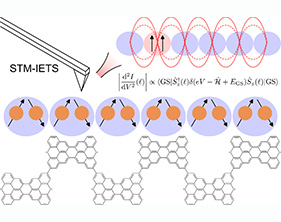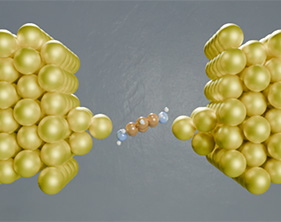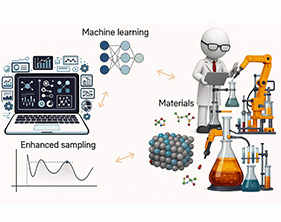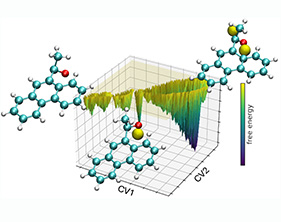Atomistic Simulations
The interpretation of experimental results and the comprehensive understanding of nanoscale processes, where quantum effects play a crucial role, demand advanced theoretical support. The mission of the Atomistic Simulations Group is to integrate multiple levels of theory, including density functional theory, multireference methods, semi-empirical approaches, and classical models, in order to construct realistic atomistic descriptions of nanoscale systems. This enables the uncovering of fundamental physical properties and their signatures in experimental techniques such as scanning probe microscopy, X-ray absorption/emission spectroscopy, and Raman spectroscopy. A close and dynamic exchange between theoretical modelling and experimental validation enhances the accuracy and predictive power of computational methods, as well as fostering the discovery of novel materials, unconventional quantum phenomena, and innovative experimental strategies.
Beyond DFT methods for carbon based π-magnetism

The precise synthesis of graphene-derived nanostructures allows for rational control over their electronic, optical, and magnetic properties, thus enabling the exploration of quantum effects for device applications. However, strong correlation effects from unpaired electrons, degenerate orbitals, electron-electron repulsion, hybridization, and substrate screening present challenges for theoretical modelling. Standard exchange-correlation functionals in Kohn-Sham DFT are found to inadequately capture these effects. To address this, we have derived parameters from DFT calculations to build phenomenological Hamiltonians and performed multireference calculations alongside experimental investigations. These advanced approaches incorporate self-interaction corrections and explicitly account for Coulomb repulsion using U parameters, achieving more accurate descriptions of quantum phenomena. This combination of experimental and theoretical methods provides insights into the manipulation of quantum spin properties and addresses the limitations of traditional DFT in strongly correlated systems.
Quantum transport of mesoscopic systems

The quest to replace silicon in nanoelectronics and CPU architectures focuses on novel materials such as graphene nanoribbons and twisted few-layer graphene, which are being studied at Empa. The prediction of their electronic transport properties combines methods such as density functional theory (DFT), dynamical mean field theory (DMFT), GW perturbation theory and non-equilibrium Green's function formalism. These approaches integrate efficient descriptions of environmental effects such as gate voltage, electronic contacts and substrates. Capturing electronic correlations in mesoscopic systems remains challenging and requires advanced complexity reduction techniques. One promising approach is to describe the electronic structure near the Fermi level using optimised atomic orbitals from DFT. This work, carried out in collaboration with ETHZ/ITET (Prof. Mathieu Luisier), the University of Budapest (Prof. Angelo Valli) and Empa's Transport at Nanoscale Interfaces Laboratory, is part of the NCCR MARVEL framework to advance future electronics development.
Automation in atomistic simulation

Density Functional Theory (DFT) is the cornerstone of modern computational materials science, driving advances in fields as diverse as catalysis, nanoelectronics and quantum materials. To ensure its reliable and accessible use by non-experts, especially in High Performance Computing (HPC) environments, seamless integration can significantly improve early-stage use, for example by allowing experimentalists to cross-check their results in near-real time. To this end, we are developing intuitive user interfaces within the AiiDAlab platform that provide streamlined access to DFT calculations. This includes ensuring interoperability between Laboratory Information Management Systems (LIMS), used by experimentalists to document experimental processes, and Workflow Management Systems (WFMS), which facilitate the automation and tracking of simulations, ensuring compliance with FAIR data management principles.
Use of machine learning to accelerate materials and molecules simulation and enhance statistical sampling

In parallel, we use machine learning techniques to accelerate simulations and predictions for large-scale systems where full DFT calculations become computationally unfeasible. The use of state-of-the-art methods such as embedding, fitting and descriptor neural networks (DeepMD) or equivariant and graph neural networks (MACE) allows the construction of force fields based on accurate DFT calculations with an iteratively increasing quality (active learning). The combination of these techniques with advanced sampling methods, which dynamically modify a probability distribution during molecular dynamics runs to sample rare events with a statistically meaningful weight, provides a powerful tool that can be applied to the prediction of structural, mechanical and electronic properties of MXenes, two-dimensional transition metal carbides, nitrides and carbonitrides, as well as the simulation of surface catalytic effects, giving access to more realistic models and extended length and time scales.


-
Share
